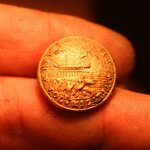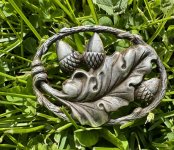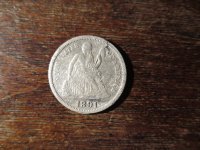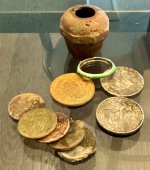steelheadwill
Gold Member
- Jan 2, 2010
- 6,689
- 715
- 🥇 Banner finds
- 1
- Detector(s) used
- Brain eyes ears and nose
- Primary Interest:
- Other
Greetings all,
Great weather lately here in New Hampshire
As you may know, I always keep my eyes open for out of place rock formations
on the flats of the tidal rivers.
In the past, some of these I've searched have been ballast piles from abandoned ships.
Had my eyes on this one for a while,
but put off searching it.
I got a good deep signal, dug a copper bracelet, a rescan of the hole indicated more targets, as I went deeper I encountered dense blue clay mixed with straw.
And buttons.
Eventually I moved stones and excavated a hole 4' X 2' and about 36" deep.
I made the large excavation after finding several buttons to avoid any damage to the remaining ones, understand that this was blind digging in a pit of muddy water.
End result was 19 'New Hampshire Volunteer Militia' buttons, (Tice NH 200A3)
and 1 General Service high convex, resembles Tice GS 226, is missing its back.
My first 'Muffin'
All but 2 of the NH buttons have intact shanks, and I see no reason why the rest won't clean up as well as these, I picked a random button to start.
5 hours of aluminum jelly and toothpicks yield 2 clean buttons.
Thanks to Buckleboy for resto advise
I believe there are more items at this site, tides limit search time.
I will update this post with new finds, and more cleaned examples.
I'm including a NH Militia Officer photo.
Thanks for looking, and Great Digs to You all.
Great weather lately here in New Hampshire
As you may know, I always keep my eyes open for out of place rock formations
on the flats of the tidal rivers.
In the past, some of these I've searched have been ballast piles from abandoned ships.
Had my eyes on this one for a while,
but put off searching it.
I got a good deep signal, dug a copper bracelet, a rescan of the hole indicated more targets, as I went deeper I encountered dense blue clay mixed with straw.
And buttons.
Eventually I moved stones and excavated a hole 4' X 2' and about 36" deep.
I made the large excavation after finding several buttons to avoid any damage to the remaining ones, understand that this was blind digging in a pit of muddy water.
End result was 19 'New Hampshire Volunteer Militia' buttons, (Tice NH 200A3)
and 1 General Service high convex, resembles Tice GS 226, is missing its back.
My first 'Muffin'

All but 2 of the NH buttons have intact shanks, and I see no reason why the rest won't clean up as well as these, I picked a random button to start.
5 hours of aluminum jelly and toothpicks yield 2 clean buttons.
Thanks to Buckleboy for resto advise

I believe there are more items at this site, tides limit search time.
I will update this post with new finds, and more cleaned examples.
I'm including a NH Militia Officer photo.
Thanks for looking, and Great Digs to You all.

Amazon Forum Fav 👍
Attachments
Upvote
2


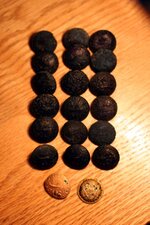
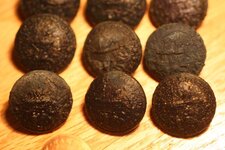
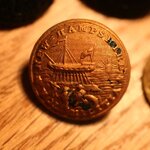





 , but I'm glad I caught it this time round
, but I'm glad I caught it this time round  .
.





